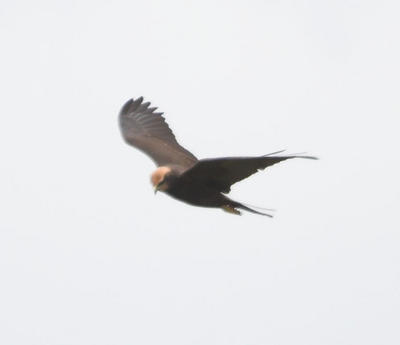




more hours on Marsh Harriers and more frustration on a windy day with little action---the male I have aged as a young adult male using criteria in Forsmann ie; about 4th or 5th cy--note the newly moulted inner primary still growing and much brighter/paler grey than the old feathers--the juvenile is a pretty fresh bird note the rich ginger crown, blackish mask, silvery sheen to the primary bases and the striking pale yellow legs and feet
No comments:
Post a Comment